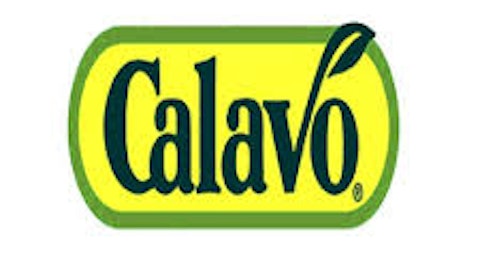
Investors of all shapes and sizes are reassessing and restructuring their portfolios in an attempt to boost returns, preserve capital, generate income and keep up with inflation. One asset class that is drumming up interest among institutional and private investors is productive agricultural land. This article looks at why you should invest and provides a selection of companies that provide access to this opportunity.
Why farmland?
There are a number of driving forces behind the popularity of this asset class. First, it is an attractive option for investors jaded with the erratic performance of equities. This is because farmland offers non-correlated growth with the financial market, delivering a reassuring level of portfolio insurance.
On top of this, both farmland values and income from commercial farming operations display a strong positive correlation with inflation, allowing investors to keep pace even as central bankers push down interest rates in an attempt to claw their way out of debt.
Farmland has the additional benefit of income generation, either via lease payments from tenant farmers, or from commercial farming activities where the landowner shares the risk and reward with a contract farmer producing on the land.
Given that land values are essentially driven by supply and demand, the shrinking global base of agricultural land (supply) and growing global population (demand) have created a perfect storm for investment in this sector. The Farmland Investment Report released by DGC projects that up to 40 million hectares (almost 100 million acres) of cropland could be lost to urbanization by 2030 – by which time there will be 8.3 billion mouths to feed.
Those who own a stake in the agricultural sector will be well-positioned to benefit from the widening gap between supply and demand.
Performance
In the US, the NCREIF Farmland Returns Index measures the investment performance of a basket of agricultural properties acquired for investment. According to the index, farmland assets delivered a total annualized return of 17.59% in 2012 and an average five-year return of 12.4% since 2007.
In the UK, the Rural Investment Index, measures the performance of a group of agricultural properties. The latest data (up to December 2011) shows that farmland has delivered an annualized 5-year return of 11.9%, which compares favorably with UK commercial property at -0.7% and UK residential property at 6.2%.
In both instances, agricultural land outperformed all other classes of property, as well as equities and bonds.
Agricultural investment funds
It can be difficult for small investors to gain access to commercial farming operations. There are a small number of unlisted farming funds in the UK, including Braemar Group PCC Limited UK Agricultural Land, an open-ended investment company, which is listed on the Channel Island Stock Exchange LBG (CISX). According to the company’s website, it invests in arable farmland and related buildings, which are managed as a portfolio of tenanted farms, with the aim of capital growth. The tenancies are managed by the property adviser, Chesterton Humberts, and the land is farmed by tenants who grow mainly cereal crops. This fund is only suitable for high-net-worth and/or sophisticated investors.
Private and quasi-institutional investors should consider going through a diversified holding company that invests in small-scale, asset-backed agricultural businesses with unencumbered land assets. The aim of such companies is to add value to the land by funding and developing commercial farming operations.
Investing in agricultural companies
There are a small number of listed companies that offer indirect exposure to farmland assets, such as Gladstone Land, which invests in agricultural land and related properties, which it then releases to farming tenants. The company currently manages around $75 million in farmland assets and recently launched a blueberry-growing operation in Oregon.
As with any publicly traded asset, the share price has fluctuated, although the capital value of the underlying farmland assets has remained extremely stable. At the end of January this year, shares were available at $14.90, and by April 17 had climbed significantly to $17.68 (a rise of 18.6% over 76 days). The current trading price is around $16.80.
Limoneira Company (NASDAQ:LMNR) is an agribusiness, farming and real estate company that currently owns and operates over 7,000 acres of farmland in the United States. The company produces and sells fruit and develops real estate. The price of shares in the company has fluctuated wildly over the past five years. In May 2008, the price started at $27.50 but dropped off to $11.50 by November. Since then the price has wavered, reaching $27.65 in June 2012 only to drop to $16.49 within three months, and then back up again to $28.70 in December. The price seems to have stabilized and currently sits at $21.69.
Investing in the wider agricultural sector
For investors seeking exposure to the agriculture sector in general, there are almost limitless options to invest in listed companies that operate in the sector and are poised to benefit from sector-wide growth in demand for products. For instance, Archer Daniels Midland Company(NYSE:ADM) is a diversified agricultural producer and processor headquartered in Decatur, Ill., with operations on six continents. The company has over 30,000 employees, more than 265 processing plants and net sales for the fiscal year ended June 30, 2011 of $81 billion.
As with most equities, the share price of ADM plummeted during the global financial crisis, from $43.17 in May 2008, to $15.45 five months later, a drop-off of more than 64%, although pricing stabilized quite quickly and has traded between $23.77 and $36.75 since. Currently shares are available at $34.62.
The bottom line
The widening gap between supply and demand will put those with a stake in productive agricultural land in a lucrative position.
Whether choosing to invest in farmland directly or via vehicles or companies, adding farmland assets to your portfolio offers an attractive level of capital security, inflation hedging, income and growth.
The article How to Invest in Agricultural Land Assets originally appeared on Fool.com and is written by Vikki Geary.
Vikki Geary has no position in any stocks mentioned. The Motley Fool has no position in any of the stocks mentioned. Vikki is a member of The Motley Fool Blog Network — entries represent the personal opinion of the blogger and are not formally edited.
Copyright © 1995 – 2013 The Motley Fool, LLC. All rights reserved. The Motley Fool has a disclosure policy.





